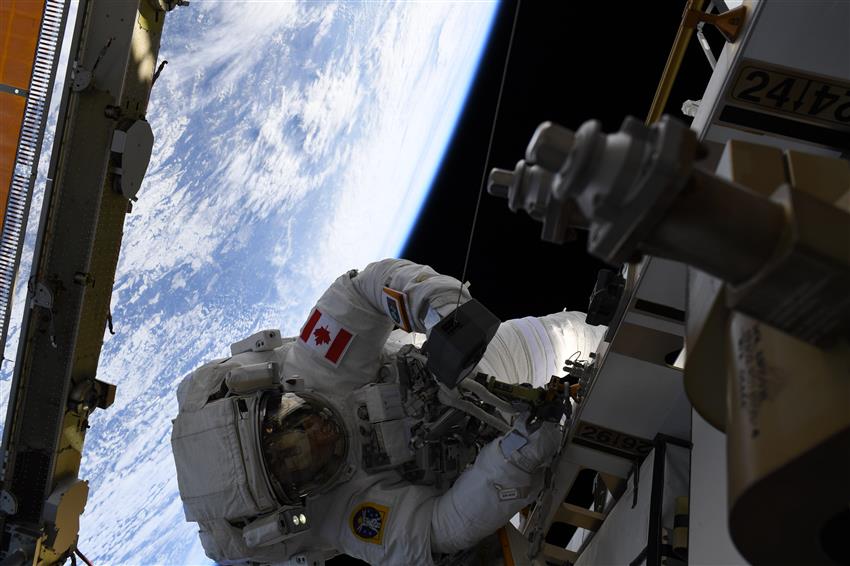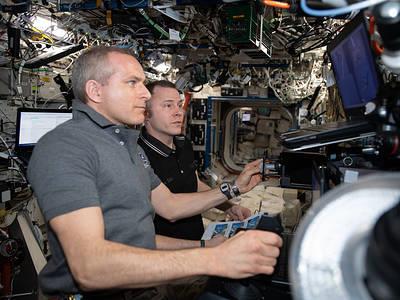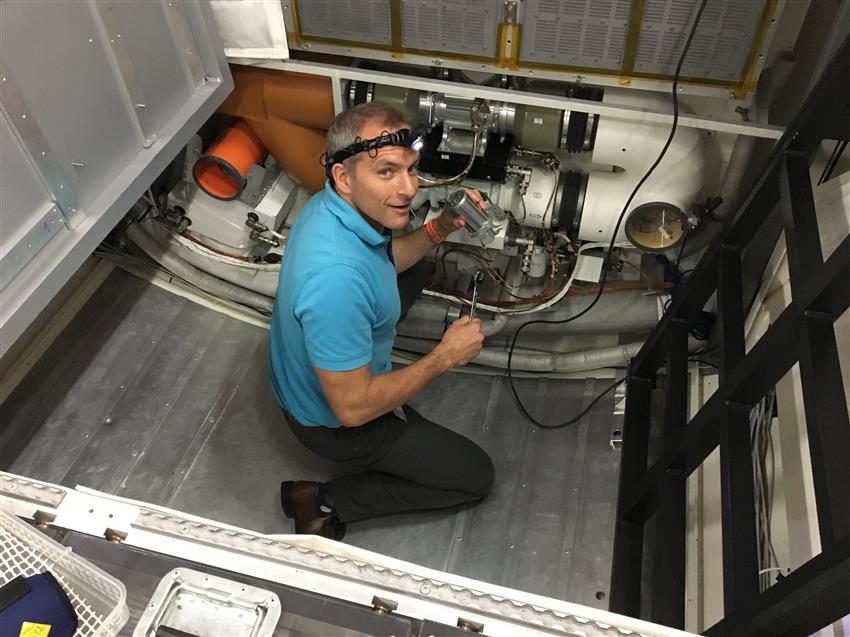David Saint-Jacques' roles and responsibilities
While aboard the International Space Station (ISS), Canadian Space Agency (CSA) astronaut David Saint-Jacques drew upon all of the knowledge and skills he had acquired during his many years of training.
As a flight engineer, he had various responsibilities to ensure smooth operations and safety on the Soyuz spacecraft and aboard the ISS.
Acting as Soyuz co-pilot
On his journey to the ISS and on his way back home, David sat to the left of pilot and commander Oleg Kononenko in the Soyuz spacecraft.
As the Soyuz co-pilot, David assisted Oleg in commanding the vehicle, ready to take over completely should something prevent the commander from performing his functions.

As a member of the prime crew, David Saint-Jacques and his crewmates, Oleg Kononenko (Roscosmos) and Anne McClain (NASA), take part in pre-launch activities. In the Integration Facility at the Baikonur Cosmodrome in Kazakhstan, crewmembers run through procedures in the Soyuz as part of the first Soyuz fit check. (Credit: NASA/Victor Zelentsov)
Conducting science activities
The ISS is first and foremost a large orbiting research laboratory. Every day, dozens of science activities are conducted on board.
Their purpose is to study the impact of weightlessness on the human body in order to protect the astronauts. The research also benefits various aspects of our everyday lives.
During his mission, David conducted international and Canadian health science activities, including 7 Canadian experiments and 2 technology demonstrations.
Going on spacewalks
Like all astronauts assigned to a space mission, David has obtained his qualification to conduct spacewalks, also called extravehicular activities.
David aced his virtual and practical training at NASA's Neutral Buoyancy Laboratory, making him fully qualified to perform spacewalks.
On April 8, 2019, David ventured outside the Station for his first spacewalk. He was joined by NASA astronaut Anne McClain. The pair spent six hours and twenty-nine minutes hours outside the ISS.
Operating Canadarm2
David is trained to capture and dock visiting cargo ships using Canadarm2. He holds the highest level of qualification.
David operated Canadarm2 on May 6, 2019, to capture a Dragon cargo vehicle. It was the first time a CSA astronaut performed a "cosmic catch."
SpaceX's Dragon and Orbital ATK's Cygnus are uncrewed resupply vehicles that play a key role in space missions. They carry a wide variety of materials, from spare parts, to science experiments, to necessities for the crew living aboard the station.
Once a doctor, always a doctor—even in space
David was a crew medical officer during his mission.
His years of practising medicine in small teams in Nunavik, a remote region, prepared him well for a space mission.
As a crew medical officer, David was committed to the health and well-being of his crewmates, and ready to spring to action as required.
Knowing the Columbus Laboratory inside out
Crewmembers receive training on all of the ISS modules. They learn how to use the scientific equipment in every module and what to do in the event of an emergency.
There is always at least one crewmember trained as a specialist for each module.
David served as the specialist for the European Space Agency's Columbus Laboratory. That means he would take care of its maintenance, its repairs, and any issues that would have arose.



